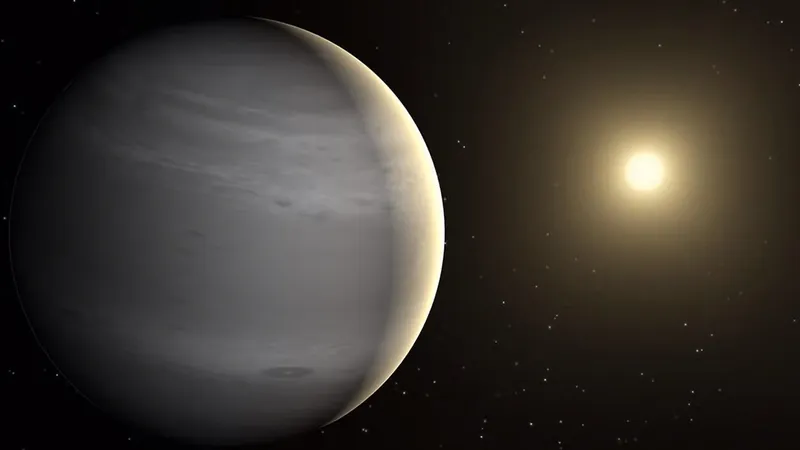
A Global Team of Citizen Scientists Confirm a Stunning Exoplanet Discovery!
2025-06-29
Author: Rajesh
Astronomers Uncover TOI-4465 b, a Distant Gas Giant
Spotting exoplanets is a challenging endeavor even with the best technology. Yet, astronomers recently celebrated a breakthrough with the discovery of TOI-4465 b, a gas giant located 400 light-years away from Earth. This magnificent planet transits its star every 102 days, taking just 12 hours to pass in front of it.
The Quest for Confirmation
Initially spotted by NASA's Transiting Exoplanet Survey Satellite (TESS), TOI-4465 b's existence required further validation. Astronomers can't rely solely on a single transit event; they need multiple observations to confirm the planet's consistent presence. Given its lengthy orbital period, chances to observe TOI-4465 b are limited to about three opportunities each year.
Zahra Essack from the University of New Mexico, who spearheaded the project, highlighted the difficulties: "Each transit only lasts about 12 hours, and achieving that in clear, uninterrupted conditions is rare! Weather, telescope access, and continuous monitoring all add to the challenge."
What Makes TOI-4465 b Unique?
This gas giant is not just another exoplanet; it’s a fascinating Jupiter-like world! Measuring 25% larger than Jupiter and weighing in at six times its mass, TOI-4465 b lies within a unique class of planets. With moderate temperatures between 375-478 K (roughly 200-400°F), it acts as a bridge between scorching hot Jupiters and our cold, distant gas giant.
Citizen Science to the Rescue!
To tackle the observation challenges, Essack and her team turned to citizen scientists around the globe. They called on amateur astronomers with powerful telescopes to help track the next transit of TOI-4465 b. A phenomenal 24 citizen scientists from 10 different countries joined the effort, effectively covering the crucial 12-hour observation window.
Their collaborative efforts were instrumental, merging data from both amateur telescopes and renowned observatories like Palomar, Whipple, and La Silla.
Why This Discovery Matters
This exciting discovery enriches our understanding of long-period exoplanets, those with orbital periods exceeding 100 days, which are often overlooked in current catalogs due to observation limitations. As Essack pointed out, studying these planets offers valuable insights into planetary formation and evolution under moderate environmental conditions.
The Power of Global Collaboration
The success of this venture underscores the significance of citizen involvement in scientific research. Programs like TESS and networks like Unistellar demonstrate how amateur astronomers and professionals can unite to expand knowledge and make groundbreaking discoveries.
As Essack stated, "This not only broadens our understanding of distant exoplanets but also showcases the incredible role that passionate astronomy enthusiasts can play in pushing the boundaries of scientific research."
Closing Thoughts
As we celebrate this remarkable discovery, it becomes clear that the sky isn't the limit; it's just the beginning!


 Brasil (PT)
Brasil (PT)
 Canada (EN)
Canada (EN)
 Chile (ES)
Chile (ES)
 Česko (CS)
Česko (CS)
 대한민국 (KO)
대한민국 (KO)
 España (ES)
España (ES)
 France (FR)
France (FR)
 Hong Kong (EN)
Hong Kong (EN)
 Italia (IT)
Italia (IT)
 日本 (JA)
日本 (JA)
 Magyarország (HU)
Magyarország (HU)
 Norge (NO)
Norge (NO)
 Polska (PL)
Polska (PL)
 Schweiz (DE)
Schweiz (DE)
 Singapore (EN)
Singapore (EN)
 Sverige (SV)
Sverige (SV)
 Suomi (FI)
Suomi (FI)
 Türkiye (TR)
Türkiye (TR)
 الإمارات العربية المتحدة (AR)
الإمارات العربية المتحدة (AR)